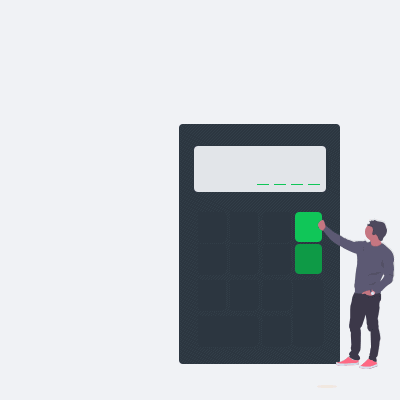Knowing how to price your rental property has been an issue since the dawn of time (or whenever the first rental was). Before the internet and modern technology, investors were driving around hoping to see a “for rent” sign and writing down (on paper) how much each place was going for.
Fast-forward to today, and calculating how much to set the rent for your property has changed dramatically. Let’s jump into how to correctly price your rental in today’s world from our friends at Baselane.
Do a Market Rental Analysis
A market analysis is a deep dive into every metric involved locally in your investing journey. Identifying trends will set you up for long-term success in any market and allow for higher rent increases in the future when identified correctly. Your property will most likely be similar to others in the rental market area, and you can compare earnings using this data.
Using actively listed properties can give you insight into a rental range, but only the ones leased in the last 12 months or less (six is better) can give you the accurate range that the market is dictating. Comparable properties should be within a half-mile of your property, and it would be even better if you could grab direct neighborhood comparisons. A trusted, investor-friendly real estate agent can help you learn what properties are renting for accurately if you live in a nondisclosure state (like myself in Texas), or you can utilize rental estimate tools.
Once you have shrunken your search size to properties in your area, the next step is ensuring they are truly comparable. A 2009-built, five-bedroom house with a 10,000-square-foot lot is not the same as a 1987-built, two-bedroom townhouse, even if they are across the street. Choosing at least three comparable properties will help you confidently estimate current market rent.
There will also be varying vacancy rates and rental demand in each area to consider. Rent could have fallen in an area over the last five years, but only one year has been steady. A market in a different state could be rapidly rising because a new, massive distribution warehouse center has begun construction.
Each market also has management and maintenance costs that can vary. This will all be part of your due diligence process, and understanding the nuances of investing in your market will help you thrive.
Research Rent Control Laws
Rent control laws differ by state, so it’s crucial to consider local regulations when setting your rental price. For instance, in California, rent increases are limited to 10% or 5% plus the rate of inflation, whichever is lower. Meanwhile, in Florida, landlords are unrestricted in how much they can raise rent, though they are required to provide tenants with proper notice ahead of time.
Always ensure you know the specific laws in your area before changing rent and ending up in hot water.
Calculate Operating Costs
Operating expenses are another critical factor many investors overlook. Unfortunately, you have quite a few more expenses than just the mortgage. Your ideal scenario is to receive your rent, take out all of your expenses, and then still have some cash left over each month, depending on your goals.
Common rental property operating costs include:
- Maintenance
- Repairs
- Utilities
- Landlord insurance
- Management fees
- Property taxes
- Vacancy
This list can be added to, depending on your location.
The rental market is ever-evolving, with each location balancing appreciation and cash flow, which you need to consider. The 1% rule provides a quick way to estimate how much rent to charge. It suggests that your monthly rent should be about 1% of your property’s value.
For instance, if your property is worth $300,000, you’d aim for $3,000 in rent. Once you’ve calculated this, compare it to your expenses, ensuring your operating costs (like maintenance, taxes, and insurance) are less than 50% of your gross rental income. This ensures profitability while covering essential costs.
These are just some baseline rules to examine, and in today’s market, these rules may not even be completely achievable. I use them as a rule to see if I want to examine a deal even further. The 0.8% rule may actually be the new standard; it is just not as catchy.
Determine the Value of Amenities
You can typically increase rent for units that offer desirable amenities.
Features such as smart home devices, fitness centers, and pet-friendly services can significantly boost a property’s appeal. Other popular amenities that may justify higher rental rates include outdoor kitchens, package management systems, lap and lounge pools, and community gardens. Additionally, co-working spaces, courtyards, or rooftop decks offer communal areas that attract tenants looking for a modern lifestyle.
Offering these features can enhance your property’s value and differentiate it in a competitive rental market.
Adjust Rent Based on Seasonality and Inflation
Rental demand fluctuates throughout the year, with higher rents during peak periods like summer and winter holidays and lower rates in off-seasons like fall and spring. People would rather not move their kids during the school year or pack during the holiday season.
Inflation also affects rent. As operating costs increase, landlords may need to raise rents. Always monitor the local market, inflation trends, and cost of living to determine appropriate rent increases.
Final Thoughts
Determining the right amount to charge in rent is essential to maximizing your revenue and success for the future. If the market is competitive, consider adding upgrades like parking spaces or smart home features to attract tenants. Pet-friendly properties often allow for higher rent as well, but come with their own concerns of possible pet damage.
For collecting rent and tracking expenses, Baselane streamlines the process with automated payments, reminders, and even late fees. Tenants can pay easily through ACH or card from any device, helping to ensure on-time payments and a smoother experience for both parties. The days of mailing rent checks, writing down when you paid your bills, and driving around searching for “for rent” signs are thankfully in the past.

Start analyzing today
A good investment begins with a solid plan built upon solid math. Quickly and efficiently analyze a potential real estate investment using BiggerPockets’ investment calculators. We’re here to help you maximize your profit while lowering your risk—no matter your strategy.
Note By BiggerPockets: These are opinions written by the author and do not necessarily represent the opinions of BiggerPockets.






